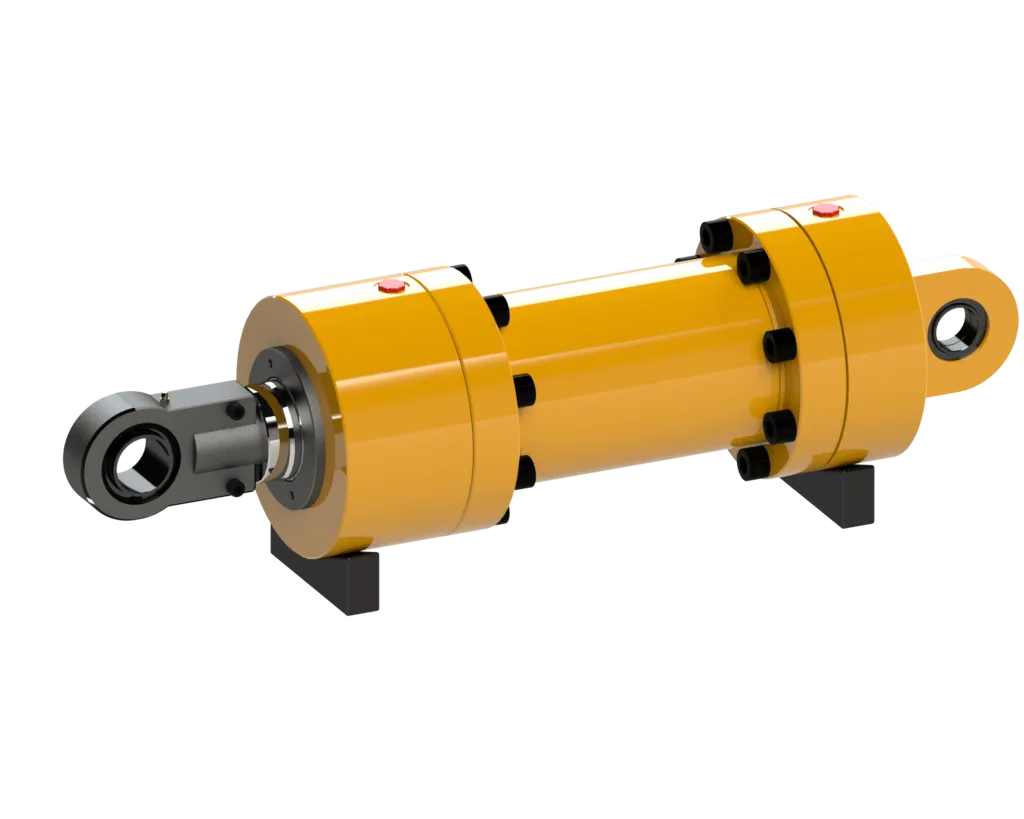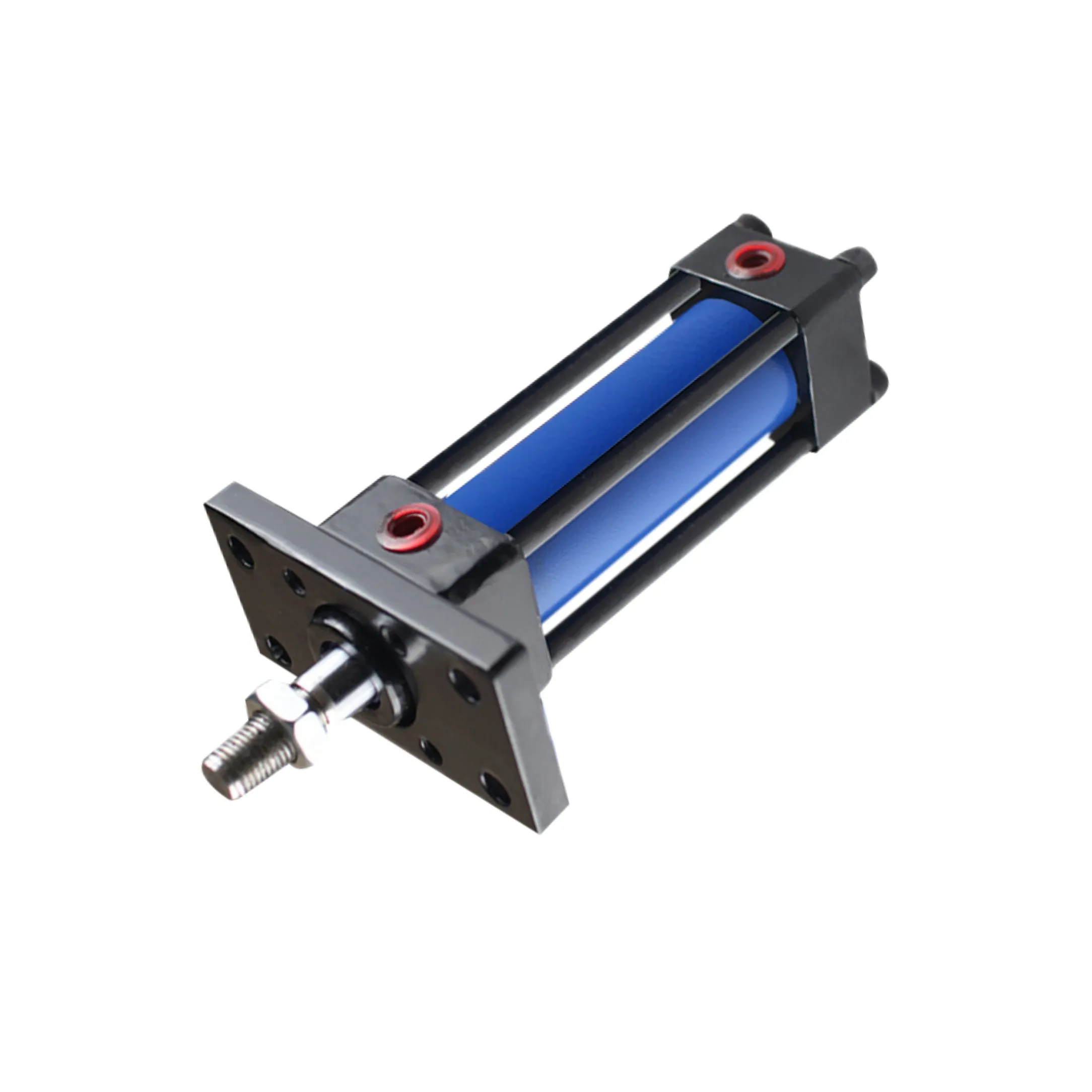The Ultimate Guide to Heavy-Duty Hydraulic Cylinders
Understanding Heavy-Duty Hydraulic Cylinders
In the realm of industrial machinery, heavy-duty hydraulic cylinders play a crucial role in providing powerful and reliable force for various applications. These cylinders are robust, durable, and capable of withstanding high pressures to deliver precise movement and control.
Definition and Composition
Heavy-duty hydraulic cylinders are mechanical actuators that utilize pressurized hydraulic fluid to produce linear motion. They typically consist of a cylinder barrel, piston, rod, seals, and hydraulic fluid. These components work together to convert hydraulic energy into mechanical force.
Importance and Applications
Heavy-duty hydraulic cylinders are widely used across industries such as construction, mining, agriculture, and manufacturing. They are essential for tasks like lifting heavy loads, pushing or pulling equipment, and controlling machinery with precision. These cylinders enhance efficiency, productivity, and safety in various applications.
The Working Principle and Basic Operation
The working principle of heavy-duty hydraulic cylinders is based on Pascal’s law, which states that the pressure exerted on a confined fluid is transmitted equally in all directions. When hydraulic fluid is pumped into the cylinder, it pushes against the piston, generating linear motion of the rod. This movement is controlled by the flow of hydraulic fluid into and out of the cylinder.
Types and Configurations of Hydraulic Cylinders
Single-Acting Hydraulic Cylinders
Single-acting cylinders use hydraulic pressure to extend the piston, while a spring or gravity returns the piston to its original position. These cylinders are simple in design and ideal for applications where force is needed in one direction.
Double-Acting Hydraulic Cylinders
Double-acting cylinders utilize hydraulic pressure to extend and retract the piston, providing force in both directions. They are versatile and commonly used in applications that require precise control over movement.
Advantages of Heavy-Duty Hydraulic Cylinders
- High Load Capacity: Heavy-duty hydraulic cylinders can withstand extreme loads and pressures, making them ideal for heavy-duty applications.
- Precise Control: These cylinders offer precise positioning and control, ensuring accurate movement and operation of machinery.
- Durability: Built to last, heavy-duty hydraulic cylinders are designed to withstand harsh environments and heavy usage, providing long-lasting performance.
- Efficiency: By converting hydraulic energy into mechanical force, these cylinders improve efficiency and productivity in various industrial processes.
- Safety: With reliable performance and precise control, heavy-duty hydraulic cylinders enhance workplace safety by reducing the risk of accidents and errors.
Industries Where Heavy-Duty Hydraulic Cylinders Are Widely Used
Construction Industry
In construction, heavy-duty hydraulic cylinders are used in equipment such as cranes, excavators, and bulldozers to lift and move heavy materials with precision.
Mining Industry
Mining operations rely on heavy-duty hydraulic cylinders in equipment like rock breakers, haul trucks, and drilling rigs to handle tough conditions and heavy loads.
Agricultural Industry
Agricultural machinery such as tractors, harvesters, and irrigation systems utilize heavy-duty hydraulic cylinders for tasks like plowing, seeding, and harvesting crops.
Manufacturing Industry
Manufacturing plants use heavy-duty hydraulic cylinders in machinery for metalworking, stamping, and material handling to ensure efficient production processes.
Automotive Industry
Automotive assembly lines rely on heavy-duty hydraulic cylinders for tasks like lifting, pressing, and moving vehicle components during production.

Factors Affecting the Performance of Heavy-Duty Hydraulic Cylinders
Load Capacity and Maximum Working Pressure
The load capacity and maximum working pressure of a hydraulic cylinder determine its ability to handle heavy loads and withstand high pressures without failure.
Piston Diameter and Rod Size Considerations
The size of the piston and rod in a hydraulic cylinder affects its force output, speed, and stability during operation, based on the surface area and strength of the components.
Cylinder Stroke Length and Retract Speed
The stroke length of a hydraulic cylinder determines the distance it can extend or retract, while the retract speed influences the efficiency and performance of the cylinder in various applications.
Seal Selection and Sealing Mechanism
The type of seals used in a hydraulic cylinder and the sealing mechanism play a crucial role in preventing leaks, maintaining pressure, and ensuring smooth operation over time.
Operating Temperature Range and Fluid Compatibility
The operating temperature range and compatibility of hydraulic fluid with the cylinder’s components are essential factors that affect performance, efficiency, and longevity in different working conditions.
Regular Maintenance and Care of Heavy-Duty Hydraulic Cylinders
Regular maintenance and care of heavy-duty hydraulic cylinders are essential to ensure optimal performance, longevity, and safety in industrial applications. By following proper maintenance practices, operators can prevent breakdowns, extend the life of cylinders, and maintain consistent performance.
Inspection and Preventive Maintenance Measures
Regular Inspection
Inspecting hydraulic cylinders for leaks, damage, and wear regularly helps identify potential issues early and prevent costly repairs or replacements. Check for signs of wear, corrosion, and misalignment to ensure proper functioning.
Preventive Maintenance
Implementing preventive maintenance measures such as replacing seals, lubricating moving parts, and monitoring performance indicators can extend the life of hydraulic cylinders and minimize downtime in critical applications.
Correct Installation of Heavy-Duty Hydraulic Cylinders
Proper installation of heavy-duty hydraulic cylinders is essential for optimal performance and safety in industrial machinery. By following correct installation techniques and ensuring alignment and parallelism, operators can prevent issues like leaks, misalignment, and premature wear, ensuring reliable operation and efficiency.

Maintenance Tasks for Heavy-Duty Hydraulic Cylinders
Cleaning
Regularly cleaning hydraulic cylinders and components helps remove dirt, debris, and contaminants that can cause wear, corrosion, and malfunctions. Use appropriate cleaning agents and methods to maintain cleanliness and prevent damage.
Lubrication
Applying lubrication to moving parts of hydraulic cylinders reduces friction, wear, and heat generation, ensuring smooth operation and extending the life of components. Use lubricants recommended by the manufacturer for optimal performance.
Checking Wear
Monitoring wear on seals, rods, and other components of hydraulic cylinders helps identify potential issues and prevent failures. Inspect for signs of wear, damage, or misalignment regularly to address problems before they escalate.
Fault Diagnosis and Common Problems
Identifying faults and common problems in heavy-duty hydraulic cylinders is crucial for maintaining performance, safety, and efficiency in industrial applications. By understanding common issues like leaks, contamination, and seal failures, operators can diagnose problems effectively and implement timely solutions to prevent downtime and costly repairs.
Troubleshooting Tips and Solutions
When faced with issues in heavy-duty hydraulic cylinders, operators can follow troubleshooting tips and solutions to diagnose problems, identify root causes, and implement corrective actions. By addressing common issues like fluid leaks, erratic movement, or loss of pressure, operators can minimize downtime, improve performance, and extend the life of hydraulic cylinders.
Frequently Asked Questions
What Are Heavy-Duty Hydraulic Cylinders?
Heavy-duty hydraulic cylinders are mechanical actuators that use pressurized hydraulic fluid to produce linear motion for lifting, pushing, or pulling heavy loads in industrial applications.
What Industries Commonly Use Heavy-Duty Hydraulic Cylinders?
Industries such as construction, mining, agriculture, manufacturing, and automotive rely on heavy-duty hydraulic cylinders for tasks like lifting, moving, and controlling machinery with precision and force.
What Factors Affect the Performance of Heavy-Duty Hydraulic Cylinders?
Factors like load capacity, maximum working pressure, piston diameter, rod size, cylinder stroke length, seal selection, operating temperature, and fluid compatibility influence the efficiency, longevity, and safety of heavy-duty hydraulic cylinders in various applications.
